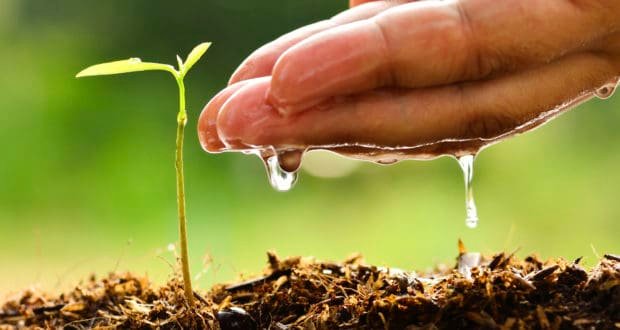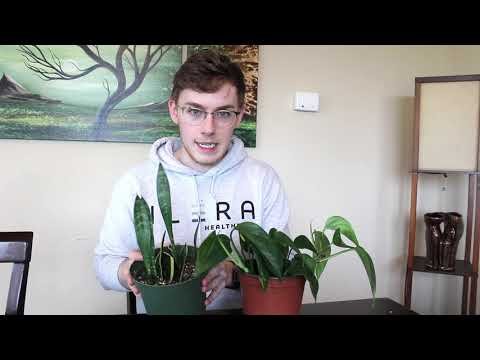How to Use a Soil Probe?
One of the most important activities in keeping plants happy and healthy is regulating soil moisture. When soil is sealed inside a container, how do you know the consistency of the soil? If you’re only interested in what’s on the surface, the finger works, and chopsticks are a cheap way to get a sense of what’s underneath, however a soil probe is the best way to determine how wet your root zone is.
These beautiful low-fi tools are known and loved by professionals in horticulture, and are the ideal way to monitor the state of your soil in the planter, giving you vital information about when to water.

source: farmmanagement.pro
How to take a soil reading?
It is a challenge to gauge soil moisture, especially with larger plants and attempting to get a sense of how dry the soil is deep within the pot. Overwatering is a major cause of plant death, particularly in containers without drainage holes. The soil probe’s most useful application is before watering in order to determine the soil’s dryness level before adding more moisture.
It is simple to use the soil probe. Simply push through the soil as deep as possible then pull up with the pointed end. This gives you a sample of the soil at several layers, so you can compare moisture levels throughout the pot.
Pro Tip: Brass Soil Probes are antimicrobial, but you should clean your probe between plants when moving between crops to avoid picking up pathogens and pests.
When you’re caring for your houseplants, you should make sure that the soil is even and consistent in moisture, but not soggy or soaked, as some varieties prefer it to dry out more than others.
If your plant requires more water, research its watering requirements and use a soil probe to gauge when to add more water. You should keep in mind that soil near the top of the planter can be dry to touch a day or two after watering, as this is often the area around the roots where moisture collects.
Aerating your soil
When your plant is overwatered, the soil probe can be used for aeration, which involves making sure that the soil has enough holes so that the humidity can escape and fresh air can reach the roots. It is important to push the probe all the way deep into the soil and remove it gently, several times throughout the pot, to loosen the soil and create air pockets to help the roots absorb oxygen and assist in the drying process.
When soil is compacted and the water cannot be distributed evenly, it can be aerated in the same manner. This is especially effective for newly potted plants or plants that are root bound.
Cleaning and maintaining your probe
As a result, we chose brass as the material for our soil probe because it is easy to recycle and sustainably sourced, plus it is naturally anti-microbial. Although it looks new right out of the box, brass will dull over time. When it’s time to polish the soil probe, rub any brass polish on a rag and it’ll be back to its original sheen in no time.
What about moisture meters?
The basic moisture meter is a cheap and common tool on the market. While great in principle, the moisture meter we have tried has given us inconsistent and unreliable results.
The dampness of the soil is actually represented by the electrical conductivity of the soil. Moisture meters don’t directly measure moisture. It is believed that if the soil is wet, it permits the movement of small amounts of electricity. This is known as conducting capacity.
They don’t measure water content
Water content isn’t actually measured! They measure electricity conductivity, where water isn’t the only factor to take into account.
There are many factors that can affect your results. The composition of your soil and the presence or absence of various fertilizer salts can have a very large impact on the results you get.
When a mix is very porous and chunky and has a lot of air, such as an orchid bark mix, the results may be horrible, misleading.
Most are junk and you can’t calibrate them
There are many cheap soil moisture meter options on the market that are nothing more than junk. They aren’t even worth the few dollars that you spend on them.
Many of us have seen them in nurseries and hardware stores. Don’t be tempted to buy one. They usually give out false readings that are simply unreliable.
Although they might operate at first if they are brand-new, they won’t last long if they are used frequently, and any good piece of measuring equipment will require calibration.
Although the fact that they cannot be calibrated against a standard is potentially troublesome, what should you expect from something that only costs a few dollars?
It drives the wrong behavior
The care of houseplants entails many factors, and the use of a moisture meter removes the thinking process, which can be extremely dangerous.
Unless you are aware that you need to water your plant right now, you may disregard your plant when the meter indicates “wet,” even if the soil is dry to the touch. In fact, the soil is probably dry and needs to be watered NOW!
It is unlikely that you’ll get such a good moisture meter that you won’t end up paying a lot for something that is more trouble than it’s worth and may not always perform as well.
So what should you use instead?
Alternative Methods to Measure Moisture
Use your finger to feel the soil
I’m sorry for disappointing you, but there’s no gadget you need for this one! A general rule of thumb is to water until the top inch or so of soil is dry, then water again.
Feel the soil with your finger. Is it still moist and clings to your fingers? If so, you may need to water. Is it still a bit dry? Weather permitting, wait until the soil is dry before watering.
Though this rule is a bit oversimplified, it is a good guide for most situations since soil moisture needs will vary depending on what you are planting.
There are plants like ferns that hate to have much of their moisture evaporate, while succulents and others prefer to have less moisture evaporate altogether between waterings.
This rule of thumb works well for tropical foliage plants. You can also visually inspect the soil too. Does it look dry? Is it lighter in color? You can gradually determine the level of moisture in the soil by looking at the color.
Use a chopstick
A couple inches of soil and a bamboo chopstick should be inserted at least two inches deep into your soil a few minutes.
Inspect the chopstick with a palette. If the color darkens at the end that was buried in the soil, that indicates it has absorbed water and you should wait a few days before you water again.
The soil can also be felt with your finger to confirm the color change, if you are not sure. If you are not sure, you may need to water the garden at that time.
Lift the pot
It is also possible to judge if a plant needs to be watered by picking up its pot and feeling the weight. You can learn to judge whether a plant needs to be watered by picking up its pot and feeling its weight.
Try picking up your pot after you’ve watered it. You can also lift it every few days. If the soil has dried out, it will feel considerably lighter, especially if it is in a lightweight plastic pot.

